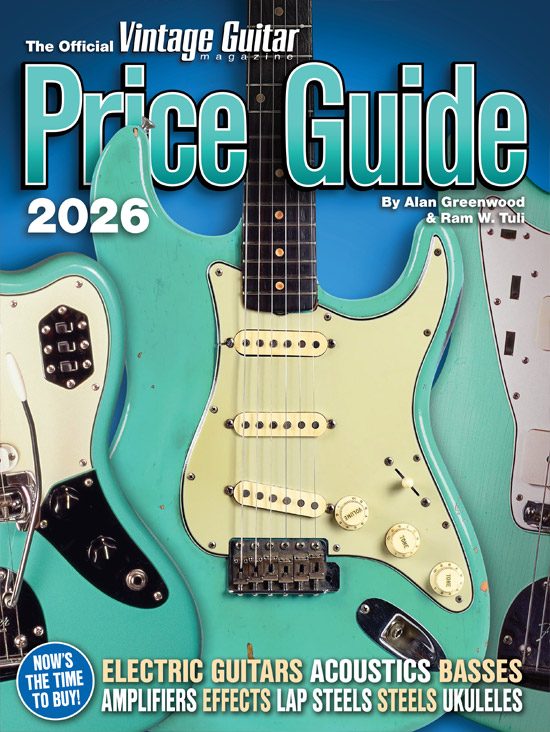
Andrew Synowiec’s latest album, Fun, is loaded with ferocious pentatonics, muscular grooves, and the kind of instrumentals that harken to the good ol’ days when guitar ruled the airwaves. But there’s more to Synowiec than fretboard dexterity and influences ranging from Eric Johnson to Joe Satriani – he’s an A-list session cat who plays for the song, has a jazz pedigree, and a Jones for Satch’s G3 tour.
Fun sounds like the most badass musical business card ever.
The 17-year-old me would really dig this record, and there’s gotta be more people like that out there in the world. It’s just about getting them to hear it.
The early tracks have the fireworks, but as you get deeper, there’s lots of depth and artistry.
I’d done a record before this, trying to do the instrumental-guitar thing but not be so polished and slickly produced with obvious overdubs. Sometimes, those kinds of records are well-crafted but sound like library music. Sonically, it left a little bit to be desired. What I was hoping to do with Fun is take it a step forward. So, we did the whole record in two days, which was really fast, but felt very luxurious.
It sounds like you and the band are really playing off each other. It has a vibe.
That was my hope. There are certain records I love that really are crafted – Eric Johnson and Steve Morse come to mind. That stuff is overdubbed, but sounds beautiful and really well-done. Maybe my taste comes from all my years playing jazz, but it has to have that live element. Because there’s no vocalist, you need some way of selling it to the listener, connecting it to them, and having it jump out of the speakers. I’d get mixes back and realize that the organ player was listening to me, and his bass line echoed something I played, and then I played something based on what he played. That stuff does not happen when you’re sending files back and forth.
Do you have trouble genre-switching to execute the correct feel?
The styles inform each other. It’s good for being a craftsman, but not so good for wanting to put something out and have it fit into a nice little box that somebody could play on the radio. If I’m playing a session for an artist, it’s pretty easy to put myself in their shoes and understand when they say, “That was great. Can we do it again (laughs)?” Some people would say, “If it’s so great, why are you making me do a thousand takes?” I can put myself in their shoes, and I get it. As an anxious, self-doubting artist, you want other options. Also, being a session player helps you as a solo artist – you have more tools at your disposal, more places to go to. I’ve never been one of those who thought that understanding how harmony works hurts your chances of writing good melodies and songs (laughs).
What did you use on “Late To The Party”?
That’s a Mike McGuire Strat-style, which I think is a relic’d Allparts guitar with pickups he wound. I’m stepping on a fuzz pedal for the crazy section – a Tsakalis AudioWorks Experience. It’s a great-sounding pedal with a fuzz side and an Octavia side that can be used independently. It’s very expressive. I’d never been a fuzz guy, but now I’m way into using the guitar’s Volume knob to manipulate tone and gain. That was first in the chain, and then a King Tone The Duellist, which is like a Tube Screamer on one side and a Bluesbreaker on the other. I also have a Strymon Compadre, which I was using as a volume pedal. You can add an expression pedal, which will act as a volume pedal because there’s no audio running through it. I used the same amp on the whole record with a cabinet that Derek Trucks often uses.
You’re a Rivera guy.
I’m an equal-opportunity amplifier guy (laughs). I tend to use Riveras live and in my home studio, but the first really incredible piece of guitar gear I ever owned was a Soldano. I was an early-’90s kid and those amps were huge, so that sound stuck in my head. I finally got a Hot Rod 50 Plus that I’d wanted for so long and it records really well. The guitar really jumps out of the speakers. I used it for the whole record.
The album truly resonates.
The guys I loved were Eric Johnson and Satriani, and it wasn’t all pyrotechnics.
This article originally appeared in VG’s January 2024 issue. All copyrights are by the author and Vintage Guitar magazine. Unauthorized replication or use is strictly prohibited.



